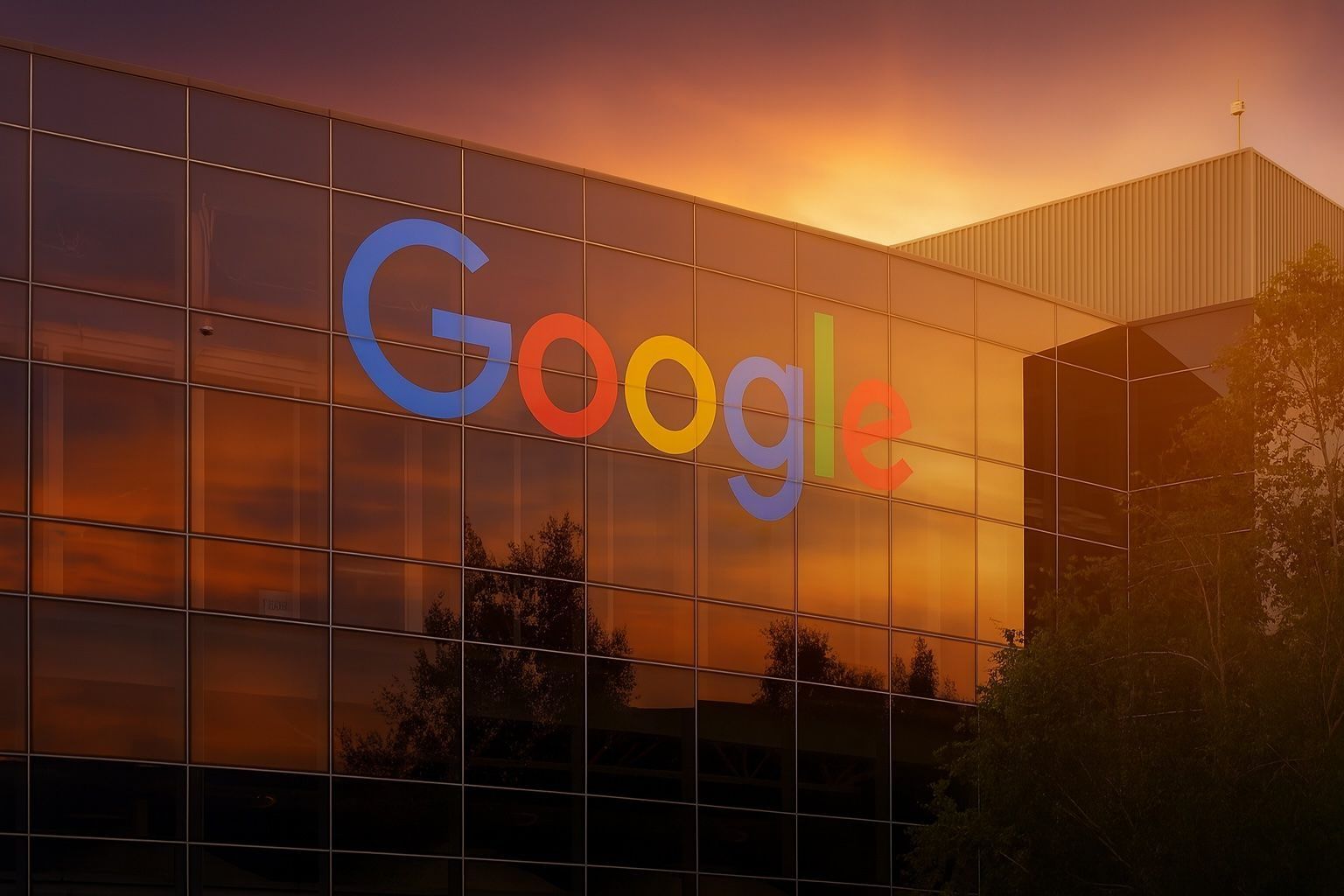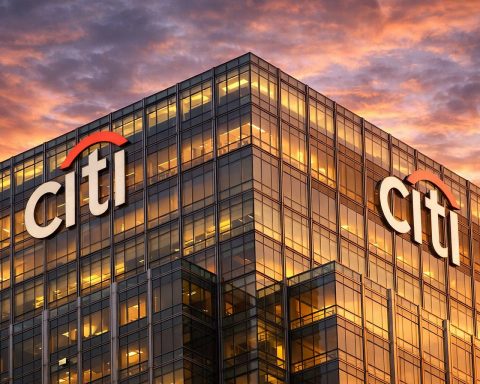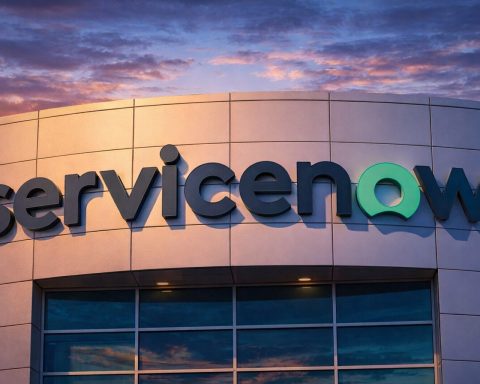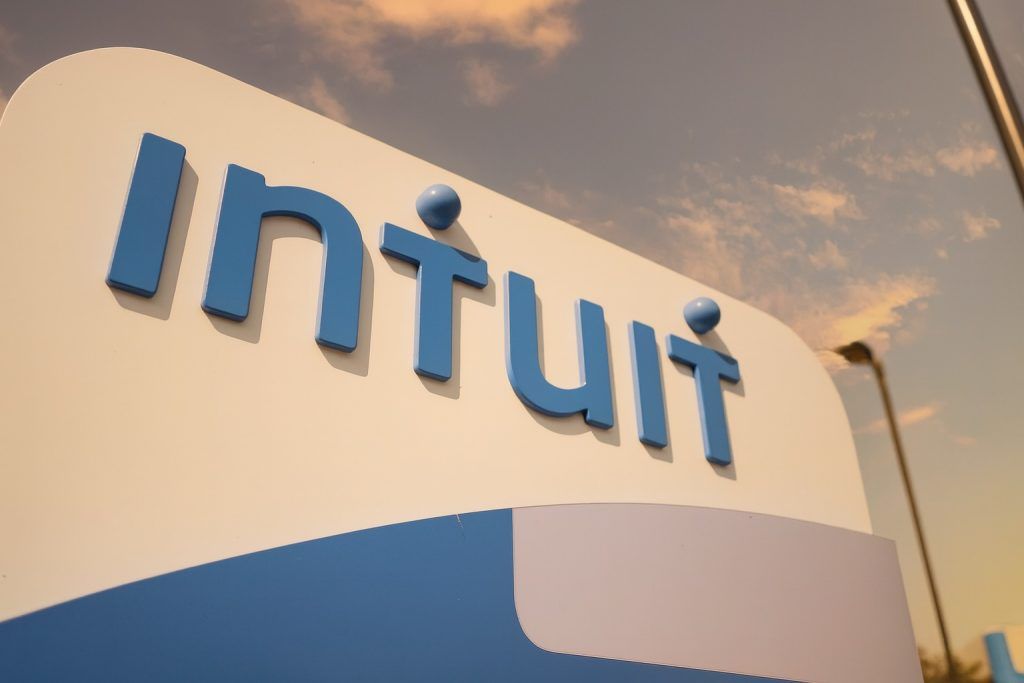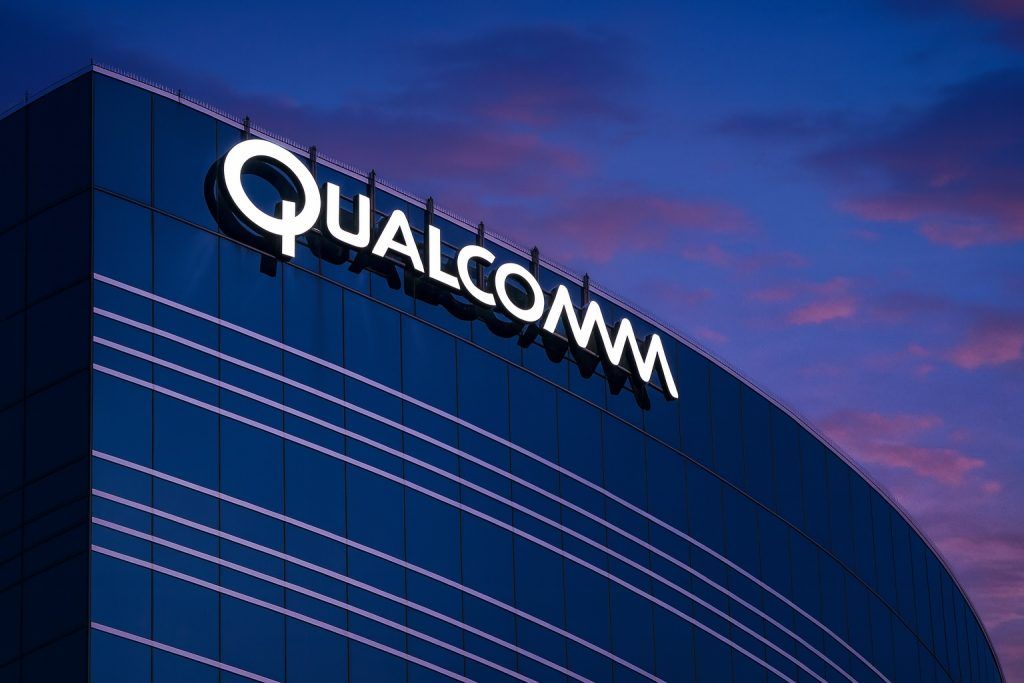Alphabet’s Shocking Surge: GOOGL Near Record Highs on AI Boom, Ad Rebound & $3T Milestone
- Near All-Time High: Alphabet (Google) stock has soared to record territory, trading around $255–$256 per share in mid-October – close to its 52-week high and valuing the company just shy of $3 trillion market cap [1]. Shares are up over 30% year-to-date, including a blistering +38% jump in Q3 2025 alone [2], vastly outperforming the broader market.
- Financial Rebound:Advertising revenue is resurging after last year’s slump. In Q2 2025, Google Search ad sales grew about 11.7% YoY to $54.2 billion, and YouTube ad revenue jumped 13% to $9.8 billion, helping drive total Q2 revenue up 13% to $96.4 billion [3]. Google Cloud is also booming – Q2 Cloud revenue surged 32% to $13.6 billion [4] – and the division even reached ~21% operating profit margin for the first time [5].
- All-In on AI: Alphabet is pouring investments into artificial intelligence. In the past week alone, it announced over $24 billion for new AI and cloud infrastructure (including a $15B data center in India and $9B expansion in the U.S.) [6]. Google also rolled out its AI-infused Pixel 10 smartphones and unveiled advanced AI models (e.g. a new 27-billion-parameter research AI model) [7]. Its massive AI bet is already paying off – the company’s custom 3nm TPU AI chips are reportedly narrowing the performance gap with Nvidia [8], and one analyst called it a “once-in-a-generation investment cycle around AI” with Google “all in” [9].
- Analysts Bullish: Wall Street sentiment is overwhelmingly positive on GOOGL. Many firms have hiked their price targets: Scotiabank to $310 (citing a “clear recovery” in Google’s ad business) [10], BMO Capital to $294 (crediting Google’s “AI leadership” in Search and Cloud) [11], and UBS to $255 on improving ad trends [12]. Overall, 30+ analysts rate Alphabet a “Buy”, with an average price target in the high-$250s [13].
- Eyes on Earnings:Q3 2025 earnings are due on Oct. 29, and investors are watching for continued double-digit growth. Consensus forecasts anticipate around +16% higher revenue and +27% higher EPS for full-year 2025 [14] as Alphabet’s ad revival and AI investments fuel growth. A strong Q3 report could propel the stock toward new highs, while any disappointment or cautious outlook might spark a pullback [15].
- Broader Developments: Beyond ads, Alphabet’s empire is expanding. Google Cloud just landed a high-profile deal as the official cloud provider for the 2028 Olympics in LA [16], underscoring its cloud momentum. Self-driving unit Waymo is also accelerating – it now logs over 250,000 rider-only robotaxi trips per week with ~1,500 vehicles in U.S. cities [17], and plans to launch driverless ride-hailing in London in 2026 as its first European venture [18].
- Key Risks: Regulators are circling. In early September, Alphabet won a major court victory – a judge ruled Google won’t be forced to break up core businesses in a U.S. antitrust case, which sent the stock up 9% in one day [19]. But elsewhere scrutiny grows: the U.K. just slapped Google with a new “strategic market status” for search (inviting special oversight) [20], and the EU is investigating under its Digital Markets Act (threatening fines up to 10% of revenue) [21]. With Alphabet’s valuation near historic highs, some experts warn that massive AI spending and “frothy” tech prices could pose risks if growth falters [22].
Alphabet Stock Nears Record Highs
The Google logo on the company’s Silicon Valley campus. Alphabet’s stock has been shining as well – recently flirting with all-time highs amid surging optimism.
Alphabet Inc.’s stock (NASDAQ: GOOGL) has been on a tear in 2025, lately trading at record levels. On October 14, shares closed around $245, their highest in history or nearly so [23]. By October 16, GOOGL pushed even higher intraday – around $255–$256 – putting Alphabet’s market capitalization within a hair’s breadth of the elite $3 trillion club [24]. (For context, only a few U.S. companies – like Apple and Microsoft – have reached $3T before.) The latest rally caps a year in which Alphabet’s stock has soared ~30–32% year-to-date, vastly outperforming the S&P 500 (up ~12%) and even most Big Tech peers [25]. In fact, Q3 2025 alone saw GOOGL leap 38% – its best quarter in 20 years [26] – buoyed by booming business trends and investor enthusiasm for artificial intelligence.
This surge hasn’t been without volatility. Earlier in October, markets wobbled as macro concerns surfaced – on October 10, the Nasdaq Composite plunged over –3.6% in a single day amid U.S.–China trade tensions [27]. Alphabet’s stock briefly pulled back along with other tech giants during that selloff. Yet the downturn proved short-lived: by the next week, Alphabet had rebounded to fresh highs [28]. Traders say that even macro jitters (and an early-October U.S. government shutdown threat) barely dented big tech sentiment, as investors quickly refocused on Google’s strong fundamentals and upcoming catalysts [29]. In mid-September, Alphabet actually joined Apple and Microsoft in momentarily eclipsing $3 trillion in market value [30], after a favorable court ruling eased breakup fears. That fleeting milestone underscored just how far Alphabet’s valuation has come, and how much optimism surrounds the stock.
Financial Performance and Earnings Momentum
Alphabet’s financial results in 2025 have impressed Wall Street and marked a sharp turnaround from the digital ad slowdown of 2022–23. Second quarter 2025 (the most recent reported quarter) delivered strong double-digit growth across revenue streams. The company’s total Q2 revenue jumped 13% year-on-year to $96.4 billion [31] – a remarkable pace for a company of this size. This beat analyst expectations and was fueled primarily by a recovery in advertising and continued cloud computing gains.
Google’s core advertising business – which provides the bulk of Alphabet’s income – is firmly back on a growth track. Search advertising revenue, the crown jewel of Google’s empire, climbed about +11.7% in Q2 to $54.2 billion [32]. Notably, search ad growth actually accelerated (up from ~9.7% growth in Q1), suggesting that Google’s innovations have kept its search engine highly monetizable [33]. YouTube ad sales also rebounded strongly – Q2 YouTube ad revenue hit $9.8 billion (up 13% YoY) [34], exceeding forecasts as advertisers returned to the platform. This comeback reflects broader industry trends (digital ad budgets rising again) and Google’s own efforts: the company has integrated new AI features into search and YouTube that keep users engaged and ads effective. For example, Google’s introduction of AI-driven search overviews and chat results hasn’t cannibalized its ad business; instead, search ads have remained robust alongside these AI enhancements [35] [36]. Likewise, YouTube—despite facing fierce competition from TikTok and Instagram—saw double-digit ad growth, although analysts note slight declines in user watch-time amid that competition [37]. Overall, advertising is once again a growth engine for Alphabet, with analysts forecasting double-digit ad revenue gains ahead so long as the global economy and ad spending hold up [38].
Meanwhile, Google Cloud has emerged as a second powerhouse for Alphabet. In Q2, Google Cloud revenue surged 32% year-over-year to $13.6 billion [39] – the fastest growth among major cloud providers, outpacing Amazon’s AWS (~17.5%) and nearly matching Microsoft Azure’s ~39% growth [40]. Perhaps more significant: Google’s cloud unit, which had operated at a loss for years, reached profitability this year. In Q2 it achieved roughly a 20–21% operating profit margin [41], indicating that scaling revenues and efficiency improvements (like better data center utilization) have flipped it into the black. This is a milestone investors long hoped for, as Cloud’s bottom-line drag turns into a positive contributor. Importantly, demand for Google’s cloud services is being turbocharged by AI – businesses are flocking to Google Cloud for its AI/ML tools and infrastructure. Alphabet’s own massive investments in AI chips and data centers are attracting enterprise customers who need AI computing power. With Q2’s cloud growth, Google is chipping away at AWS’s lead and solidifying itself as a strong No.3 player in cloud computing.
Profitability and earnings have followed suit. Alphabet’s net income and earnings per share (EPS) are growing healthily again after a flat patch. While Q2 EPS figures weren’t explicitly provided in our sources, the strong revenue growth and controlled costs led to an earnings beat. Wall Street expects this trend to continue: for full-year 2025, consensus estimates predict Alphabet’s revenue will rise ~16% and EPS will jump ~27% year-over-year [42]. Such growth, if achieved, would far exceed 2024’s pace and demonstrate the payoff from the company’s strategic bets. Alphabet typically doesn’t issue official forward revenue guidance, but on its last earnings call management struck an optimistic tone about ongoing momentum in Search and YouTube, improved ad spending trends, and the path to further profitability in Cloud. They also noted that expenses are rising mainly due to heavy investment in AI capacity – something they view as critical for future growth.
Looking ahead, Q3 2025 earnings (set for Oct. 29) will be a crucial checkup on Alphabet’s trajectory [43]. Analysts are generally expecting another quarter of double-digit growth, with Search and Cloud likely leading the way. Any earnings beat or strong outlook (for Q4 and beyond) could be a catalyst to finally push Alphabet’s stock firmly above that $3 trillion mark. Conversely, if results disappoint – say, weaker-than-expected ad revenues or higher costs – the stock could see a pullback, especially given how much optimism is already baked into shares [44]. In this context, the company’s commentary on AI investments, advertising demand, and cloud deals will be closely parsed. For now, however, Alphabet’s financial picture looks bright: the company is back to robust growth, has multiple business lines firing on all cylinders, and is translating its innovation into both top-line and bottom-line gains.
AI Investments and New Initiatives Fuel Optimism
If there’s one theme driving Alphabet’s 2025 surge, it’s AI – artificial intelligence everywhere. Google’s early and aggressive bets on AI are now converging into real products, services, and revenue, sending investor excitement into overdrive. CEO Sundar Pichai has repeatedly emphasized that Google is an “AI-first” company, and this year we’re seeing what that means in practice: nearly every facet of Alphabet’s business is being infused with advanced AI, and the company is spending unprecedented sums to maintain its edge.
In just the past few weeks, Alphabet unveiled a slew of major AI initiatives. The company announced plans to invest a whopping $24 billion+ in new AI supercomputing infrastructure, a signal of its commitment to stay ahead in the AI arms race [45]. This includes building a massive new $15 billion AI data center hub in India – Google’s largest-ever investment in India – and a $9 billion expansion of its South Carolina data center in the U.S. [46]. These new facilities will be loaded with cutting-edge hardware (like Google’s Tensor Processing Unit chips) to support AI and cloud services at huge scale. According to Barron’s, Alphabet’s capital expenditures are projected to top $82 billion in 2025 (up sharply from ~$52.5B last year) largely due to these AI-focused builds [47] [48]. “We’re seeing a once-in-a-generation investment cycle around AI,” noted one analyst of this spending spree, “and Google is all in.” [49] Such massive capex underscores Google’s belief that dominance in AI will secure its future – even if it weighs on near-term free cash flow.
Google isn’t just spending on back-end infrastructure; it’s also rapidly integrating AI into products for consumers and businesses. Earlier this month, at its October 4th “Made by Google” event, the company rolled out a lineup of AI-infused consumer devices. It launched the new Pixel 10 and Pixel 10 Pro smartphones, which are powered by Google’s next-generation Tensor G5 chip and tout the theme of “AI everywhere” in the user experience [50]. These phones leverage on-device AI for features like advanced photo editing, real-time language translation, and personalized assistance, showcasing Google’s AI capabilities directly to consumers. Google also introduced a Pixel 10 Pro Fold (a foldable phone) and the Pixel Watch 4, both packed with AI-driven features (from health monitoring to smarter voice commands) [51]. While hardware is a small portion of Alphabet’s revenue, these launches are strategically important: they demonstrate Google’s AI prowess in tangible form and keep the pressure on rivals like Apple by differentiating with AI. The Pixel 10’s slogan could well be “Google’s AI in your pocket.”
On the enterprise side, Google Cloud made headlines by securing the role of official cloud provider for the 2028 Olympic Games in Los Angeles [52]. This high-profile partnership will have Google Cloud powering everything from event planning to media broadcasts with its infrastructure and AI tools – including new innovations like Google’s upcoming Gemini AI model and AI-enhanced search features for organizing Olympics data [53]. The Olympics win not only brings revenue, but also cements Google Cloud’s credibility for large-scale, mission-critical deployments, likely helping it win more big contracts. Google is also launching new AI software offerings for businesses: notably, it unveiled “Gemini Enterprise” on Oct. 9, a platform to help companies build their own AI chatbots and assistants using Google’s models [54]. This directly targets the booming market for generative AI in the enterprise, competing with the likes of OpenAI’s ChatGPT Enterprise. Moves like this suggest Alphabet is determined to monetize AI across every front – consumer gadgets, cloud services, and of course its core ad products (where AI is improving ad targeting and performance behind the scenes).
Crucially, Alphabet’s AI push is yielding technological advancements that could reinforce its competitive moat. The company’s AI research division (Google DeepMind) continues to develop state-of-the-art models. For example, Google recently showcased a new 27-billion-parameter AI model for scientific research (code-named “Gemma”) [55], highlighting its innovation beyond just ChatGPT-style chatbots. And Google’s hardware strides in AI are noteworthy: its latest 3nm Tensor Processing Unit (TPU) chips are significantly more powerful and efficient, reportedly rivaling Nvidia’s GPUs in certain tasks [56] [57]. A Scotiabank analyst who saw details of the new TPU noted it “narrow[s] the efficiency gap” with Nvidia’s best-in-class chips [58]. If Google can close the gap on AI hardware, it could reduce its reliance on Nvidia (important given the global GPU shortage) and possibly even sell or rent TPU-powered cloud services as a unique offering. All these efforts paint a picture of Alphabet doubling down on AI to drive future growth. From a market perspective, this has been a major narrative powering the stock’s rise – Alphabet is seen not just as an advertising company, but as an AI leader poised to benefit from the next wave of tech innovation.
The scale of Alphabet’s AI ambition does bring risks and questions. The massive spending will need to pay off in the form of new revenue streams (cloud contracts, AI subscriptions, etc.) over time. Alphabet’s R&D and capex budget is huge, and some analysts caution about ROI: “Investors are starting to get a little more concerned about the money that’s being spent [on AI], and the payback for that investment,” observed Anthony Saglimbene of Ameriprise, reflecting a note of caution [59]. However, for now the market appears to believe Google’s big AI bet is justified. With AI transforming everything from search results to self-driving cars (via Waymo), Alphabet is positioning itself to ride – and shape – this transformation. As long as the company executes, these investments could secure its dominance for the next decade.
Advertising Revival and YouTube Growth
Alphabet’s heart and soul has always been advertising, and 2025 has brought a welcome revival in this core business. Last year’s slowdown (when digital ad spending slumped amid economic uncertainties) now seems firmly in the rear-view. Google’s latest numbers show that advertisers are spending enthusiastically again, especially given Google’s vast reach and improved ad tech.
In the Search advertising segment – which includes the text ads you see alongside Google search results – Alphabet has reasserted its strength. Q2 search ad revenue was $54.2 billion, up nearly 12% from a year ago [60]. Considering that Google Search already commands an enormous share of the market, double-digit growth at that scale is striking. What’s driving it? Partly the macro environment: as the economy and consumer spending improved in 2025, companies boosted their ad budgets (with digital ads often being the first port of call). But Google also benefited from product changes. The integration of AI features like generative answers and “search overviews” into Google Search has kept users on the platform and even created new ad opportunities [61]. Despite some initial fears, the rollout of AI in search (think: you ask Google a question and it gives a paragraph answer synthesized from the web) has not reduced the prominence of ads – Google has carefully maintained sponsored links and shopping results. If anything, by enhancing user experience with AI, Google may be driving more search volume, which in turn means more ad clicks. Additionally, sectors like retail, travel, and finance have upped their search ad spending this year, taking advantage of insights from AI analytics to target customers better.
YouTube, Google’s other advertising juggernaut, is also booming again. Advertisers have returned to YouTube in force, drawn by its billions of hours of video viewership and improved ad formats (like short-form video ads and shoppable ads). In Q2, YouTube ad revenue rose to $9.8 billion (a +13% YoY jump) [62]. Not only did this beat analyst expectations, it marked a strong rebound from the roughly flat growth YouTube saw at one point in 2022. Key drivers include the growth of YouTube Shorts (its TikTok-like short video feature) which is being monetized with ads, and better monetization of YouTube on TV screens. Google’s been actively courting marketers with new tools to advertise on YouTube effectively across devices, and it’s paying off. The company noted that YouTube’s viewer engagement remains high, though there is tough competition: one analyst pointed out YouTube’s overall watch-time was slightly down (~1.2% YoY) as some users spend time on TikTok and Instagram Reels [63]. To combat this, YouTube is adding features (community posts, shopping integrations) and cracking down on ad blockers to ensure it can fully monetize its audience. Thus far, the strategy is working – YouTube is again a growth engine, contributing a significant chunk of Alphabet’s incremental revenue.
Beyond Search and YouTube, Google’s other advertising arms (like the Google Display Network, and ads in Google Maps, Gmail, etc.) are also contributing. The broader industry context is helpful: global digital ad spending is forecast to rise about 8% in 2025 [64], a nice tailwind for both Google and peers like Meta. In fact, Alphabet and Meta together still command roughly 50% of all online ad spend worldwide [65] – a testament to their duopoly power even as newcomers like Amazon ads grow. For Alphabet, the ad revival has also been boosted by AI-enhanced ad tools. Google has been rolling out AI-driven advertising products such as Performance Max (an AI tool that optimizes ad campaigns across all Google properties) and new generative AI features that automatically create ad copy or video from simple inputs. These make it easier for advertisers to spend on Google’s platform and reach the right audiences, resulting in higher ad efficacy and spend. Google’s advertising business is also diversified across formats – search text ads, YouTube video ads, mobile app ads, etc. – which provides resilience. So while TikTok’s rise has nibbled at YouTube’s share of user attention, YouTube remains a behemoth with over 2 billion users, and Google Search’s dominance is essentially unchallenged (it holds over 90% market share in search).
Importantly, the ad rebound is translating into better profitability for Alphabet. Advertising has high margins, and the growth here helped push Alphabet’s operating margin back above 30% in recent quarters. Combined with cost controls (Alphabet undertook some belt-tightening in late 2023, including layoffs of a few percent of staff), the resurgence in high-margin ad revenue has supercharged earnings. That’s one reason Alphabet’s EPS is expected to leap ~25–30% this year – revenue growth plus a more efficient cost base equals outsized profit growth. Going forward, as long as the economy stays reasonably healthy, most analysts see Google’s ad businesses continuing to deliver solid growth. Double-digit percentage gains may moderate as comps get tougher, but even high single-digit growth in such a large segment would be extremely lucrative. Google also has upside in new ad arenas – for instance, monetizing Google Maps (with more local ads), Discover feed ads, or expanding e-commerce related advertising (to challenge Amazon). All told, advertising is back to doing the heavy lifting for Alphabet’s financials, and together with Cloud’s rise, it presents a compelling one-two punch: stable, cash-cow ad revenues + high-growth cloud revenues. Little wonder Alphabet’s stock has been so strong.
Waymo and Other Alphabet Ventures
Alphabet is not just Google’s core services – it’s an umbrella for various ambitious projects, sometimes called the “Other Bets.” Among these, Waymo, the self-driving car unit, is one of the most watched, and 2025 has brought significant progress for Waymo. While Waymo doesn’t yet contribute meaningful revenue (and operates at a loss), it represents a potentially huge new market (autonomous ride-hailing and technology licensing), and its advancements add to the bullish narrative around Alphabet’s innovation.
In the United States, Waymo has been steadily expanding its robotaxi services. It operates in cities like Phoenix, San Francisco, Los Angeles, Austin, and Atlanta, providing driverless taxi rides to the public in certain areas. According to the company, Waymo is now completing over 250,000 paid rides per week across its service areas with a fleet of about 1,500 self-driving cars [66] [67]. This makes Waymo one of the world’s most active autonomous driving services, and the scale is growing. For example, in San Francisco – where Waymo and GM’s Cruise both run robotaxis – Waymo recently got the green light to expand citywide operations 24/7. It’s also ramping up in Los Angeles, targeting popular neighborhoods. Users hail Waymo cars via an app (including through a partnership with Uber in some cities), and feedback has been generally positive, though challenges (like occasional traffic incidents and regulatory hurdles) remain.
Now Waymo is eyeing international expansion. Just this past week, Waymo announced plans to launch its fully driverless ride-hailing service in London in 2026 [68]. This marks Waymo’s first foray outside the U.S. (aside from some testing in Japan) and a major milestone for the project. The UK has been developing regulations for autonomous vehicles, and Waymo appears to be confident it can navigate them. In preparation, Waymo will start testing in London with safety drivers and is partnering with local firms (like Moove, a vehicle financing and fleet company) to manage its UK operations [69] [70]. London’s dense and complex roads will be a big test for the technology, but cracking a market like the UK could open doors to broader Europe. Industry watchers say this move puts Waymo ahead of many competitors (most of whom are focused solely on the U.S. or China). It’s also notable that Tesla, often vocal about self-driving, is only just beginning to test a robotaxi service in the U.S., whereas Waymo is preparing to deploy in multiple countries [71]. The implication for Alphabet is that Waymo could become a valuable asset or even a spin-off if it proves the commercial viability of driverless transport.
Aside from Waymo, Alphabet’s other ventures include things like Verily (health tech), Wing (drone delivery), Fiber (high-speed internet), and more. Most are small scale relative to Google, but they can generate positive news and future optionality. For instance, Wing has been rolling out drone deliveries in select cities and partnering with retailers for faster fulfillment. And Verily, focused on life sciences, has secured partnerships with pharmaceutical companies for AI-driven research. While these don’t move the stock in the near term, they contribute to the story that Alphabet is more than just advertising – it’s an innovation factory that could incubate the next big thing.
Crucially, Alphabet has the financial firepower to fund these moonshots. With over $118 billion in cash on its balance sheet (as of mid-2025) and massive cash flow from Google, the company can afford to take long-term bets. Investors generally view Other Bets as high-risk, high-reward gambles that are “bonus” upside – the core Google business more than justifies Alphabet’s valuation, so any success at Waymo, or in AI chips, or other exotic projects would be gravy. In the case of Waymo, some analysts have estimated it could be worth tens of billions on its own if robotaxis become mainstream. For now, though, the market’s focus remains on Google’s bread-and-butter (ads, cloud, AI) while these side ventures progress in the background.
Wall Street Sentiment and Analyst Commentary
Wall Street’s tone on Alphabet has shifted from cautious optimism at the start of 2025 to almost unequivocal bullishness by Q4. As the company consistently delivered strong results and demonstrated leadership in AI, analysts and investors have grown more confident that Alphabet’s best days are not behind it – in fact, they may still be ahead. This has led to a flurry of upgrades, price target hikes, and positive commentary in recent weeks.
“Alphabet’s stock flirts with record highs,” one analyst noted mid-October, pointing out the company’s strong technical and fundamental momentum [72]. Brokerage firms overwhelmingly rate GOOGL as a “Buy” or equivalent (Outperform, Overweight, etc.) – roughly 85–90% of all analyst ratings are positive on the stock [73]. Many analysts argue that even after its rally, Google’s valuation is reasonable compared to other tech high-flyers. The stock trades around 20–23 times forward earnings, which is on par with the market (the S&P 500 is ~23×) and actually a discount to peers like Meta or Nvidia that have higher multiples [74] [75]. This has given support to the idea that Alphabet has more room to run, especially if it continues posting 15%+ growth. “Alphabet remains a relatively cheap mega-cap,” noted one investing column, citing its lower price/earnings ratio versus some peers and multiple expansion potential if growth stays strong [76].
Several high-profile analyst upgrades have made headlines. In early October, BMO Capital Markets raised its price target for GOOGL to $294 (from the mid-$200s) and reiterated an “Outperform” rating [77]. BMO’s analysts were impressed by Google’s execution in AI and its resilience in advertising. “GOOGL’s AI leadership continues to translate into strength in core Search and GCP… driving incremental user value,” they wrote, highlighting how new AI integrations are boosting usage across Google’s products [78]. They also noted Google’s ad business has proven “resilient” even as it introduces more AI, and expressed confidence that regulators are unlikely to force a drastic break-up of the company [79]. With these factors, BMO not only upped near-term estimates but labeled Alphabet a “Top Pick”, praising its diversified model (search, YouTube, cloud) and innovation pipeline [80].
Similarly, Scotiabank just boosted its target to $310 – one of the highest on the Street – calling out a “clear recovery” in Google’s advertising and the return to double-digit ad revenue growth [81]. UBS raised its target from $237 to $255, citing an improving outlook for YouTube and search ads ahead of earnings (though UBS interestingly kept a neutral rating, implying the stock’s valuation is fair for now) [82]. At the highest end, a few bullish analysts even see Alphabet topping $320+ in the next year, if AI initiatives really boost earnings. On average, though, consensus price targets cluster in the mid-to-high $250s per share [83], which is roughly where the stock trades currently. In other words, many analysts think the stock’s big 2025 run has achieved their prior targets, but given the strong outlook, they are having to lift those targets higher.
To gauge sentiment: TipRanks, which aggregates analyst ratings, reports a “Strong Buy” consensus with about 30 Buy ratings vs only ~8 Hold ratings, and an average target around $259 [84]. MarketBeat’s tracker (which includes more analysts) similarly shows an overall Moderate to Strong Buy rating, though with a slightly lower average target (~$245) and a wide range from some outlier pessimists to the most bullish at $310 [85] [86]. The takeaway is that virtually no one is recommending selling Alphabet – the disagreement, if any, is just how much upside remains. Bulls argue that if Alphabet continues to beat expectations, analysts will keep revising their estimates upward, so today’s “fair value” might be tomorrow’s conservative guess.
It’s worth mentioning that a few cautious voices exist. Not everyone is riding the hype train without reservations. For example, some market strategists worry that mega-cap tech stocks have become “crowded trades”, meaning so many investors have piled in that the stocks could be vulnerable if sentiment sours [87]. There are also warnings about the broader tech rally being perhaps too euphoric, especially around anything AI-related. Andrew Ross Sorkin, a respected financial journalist, drew parallels between the current AI-driven stock boom and past bubbles (even the 1920s boom before the crash), cautioning that unsustainable surges inevitably correct [88]. He pointed to signs of speculative excess – soaring valuations, increased leverage, and a frenzy for AI plays – concluding “We will have a crash” at some point (though he did not say when) [89]. That said, Sorkin’s view is a minority one; most analysts covering Alphabet remain focused on its fundamental strength. Still, the cautionary notes remind investors that no stock rises forever in a straight line.
So far, Alphabet’s execution has justified its stock performance – each quarter’s results have reinforced the bullish thesis. But going forward, the company will need to keep delivering strong growth and navigating challenges to maintain Wall Street’s confidence. For now, at least, the market sentiment is decidedly upbeat: Alphabet is widely seen as a must-own large-cap, a leader in the crucial AI race, and a company successfully revitalizing its core business. The stock’s massive size hasn’t stopped it from delivering market-beating returns, and many experts believe there’s more to come.
Outlook: Catalysts and Challenges Ahead
As we approach the end of 2025, Alphabet finds itself in an enviable position: near record-high stock price, thriving core businesses, and leadership in the hottest tech trend (AI). The company’s momentum appears strong, but investors are mindful of the potential speed bumps that could appear on the road ahead. Here are the key factors to watch:
Upcoming Q3 Earnings (Oct 29): This is the immediate catalyst. Expectations are high – Alphabet needs to show that its ad growth and cloud strength continued through Q3. If the company reports another quarter of ~10–15% revenue growth and solid margins, it will affirm that the bullish narrative is on track. Any positive surprises (e.g. even faster growth, or signs of accelerating momentum in Q4) could push the stock into new high territory, possibly even making Alphabet a solid member of the $3T market cap club. Conversely, if results were to miss expectations or management strikes a cautious tone (perhaps noting weaker ad demand in certain regions or heavier expenses), the stock could see a pullback. Given the ~38% surge last quarter, some consolidation wouldn’t be shocking – but it would likely be a short-term reaction unless something fundamentally deteriorates. Most analysts are optimistic that Alphabet will meet or beat the consensus, given tailwinds from holiday season ad spending and ongoing cloud deal wins [90].
AI Progress and Spending: Alphabet must execute on its ambitious AI plans. That means successfully deploying those new data centers, continuing to improve its AI models (like the much-anticipated Gemini model which is expected to rival or surpass GPT-4), and integrating AI into products without disrupting user experience. Investors will be watching metrics like capital expenditures and operating costs related to AI. So far, Google has justified its heavy spend by demonstrating revenue growth (e.g., cloud and ads benefitting from AI). But if capex keeps rising steeply and margins start to get squeezed, there could be concern. One strategist cautioned that Wall Street is fine with big AI investments “as long as they see payoff”, but patience could wane if returns are unclear [91]. In 2026 and beyond, a key question will be: does AI help widen Alphabet’s competitive moat (leading to higher revenue per user, new revenue streams, etc.), or does it become an expensive necessity just to stay in the game? Early evidence points to the former – Google is finding ways to monetize AI – but this will remain a focal point.
Regulatory and Legal Overhangs: Alphabet’s size and dominance make it a perennial target for regulators worldwide. The good news: in September 2025 Google scored a major legal win when a U.S. judge ruled that, in the ongoing DOJ antitrust case, Google would not have to divest key businesses like Chrome or Android [92]. That removed the existential threat of a forced breakup, and the market reacted with relief (Alphabet’s stock popped ~9% on the news) [93]. However, regulatory scrutiny is far from over. In the U.S., the DOJ’s case against Google’s ad tech practices continues – currently in the “remedy” phase debating possible actions short of breakup [94]. It’s not inconceivable that Google could face restrictions or be pushed to make minor divestitures in the ad-tech space, though Google vehemently argues such moves would be like trying to “go to Mars” in complexity [95]. In Europe and the UK, regulators are getting even tougher: Britain’s CMA designated Google as having “strategic market status” in search, meaning it will be subject to special rules to prevent anti-competitive behavior [96]. The EU’s Digital Markets Act is also looming – reports suggest the EU might penalize Google if it’s found to favor its own services in search results, with fines potentially up to 10% of global revenue [97]. Fines of that magnitude (tens of billions of dollars) are unlikely but not impossible. And there’s always the chance of new lawsuits or restrictions (for instance, limits on data usage or app bundling).
From an investor perspective, these regulatory issues are a background risk – they probably won’t derail Alphabet’s growth in the near term, but they could create headline risk and, in worst-case scenarios, impact the company’s operations or profits (e.g., if Google had to make costly changes to how it runs its ad business). So far, Alphabet has managed to navigate fines and rules (treating them as cost of doing business), and none have meaningfully dented its earnings power. But it’s a space to watch, especially as political winds can change. Notably, the relatively friendly court ruling in the U.S. reduced the odds of a breakup, which was a big sigh of relief for Alphabet bulls [98].
Competition: Alphabet faces formidable competitors across its segments – Amazon and Microsoft in cloud, TikTok and Meta (Facebook/Instagram) in social video, Microsoft’s Bing (with OpenAI) in search AI, Apple in mobile ecosystems, and so on. One reason Alphabet’s stock has done well is that it’s been holding its own or winning in many of these battles. For instance, Google’s search market share hasn’t materially budged despite Microsoft hyping AI-powered Bing – Google’s brand and integration of its own AI features have kept users loyal. Likewise, in cloud, Google is leveraging its AI prowess to stand out. But competition is a constant factor that could intensify. If a rival scored a major breakthrough (say, a genuinely superior search AI that draws users away, or Apple making a search engine), it could threaten Google’s core. The likelihood seems low in the short run, but tech landscapes can shift unexpectedly. Investors will keep an eye on user metrics (are people still using Google search as much? Is YouTube engagement stable? etc.) as a barometer of competitive position. At the moment, Alphabet’s wide ecosystem (Android, Chrome, Gmail, Maps, etc., all feeding data and users into its services) gives it a strong defensive moat.
Market Conditions: Finally, broader market sentiment and economic conditions will influence Alphabet’s stock. Tech stocks have benefited in 2025 from the prospect of peaking interest rates (even potential rate cuts ahead) and enthusiasm for growth narratives like AI. If interest rates fall in 2026, high-growth stocks like Alphabet could see valuations expand further, all else equal. However, if inflation or other issues cause a spike in rates or a recession, advertising budgets would be at risk and high-valuation stocks often get hit. Alphabet, with its nearly $3T valuation, is not immune to macro swings – though its strong balance sheet and essential services make it relatively defensive within tech. The concept of the “Magnificent Seven” (Alphabet, Apple, Amazon, Microsoft, Meta, Tesla, Nvidia) leading the market has been a 2025 theme; if that narrative reverses, Alphabet’s stock could consolidate. So far though, Alphabet’s fundamental performance has justified its rise, which provides some cushion against purely sentiment-driven selloffs.
Bottom Line: Alphabet enters late 2025 in a position of strength. The company is firing on all cylinders – search and ad revenues are growing again, YouTube is re-energized, Google Cloud is thriving, and bold bets in AI are reinforcing its tech leadership. This has translated into a surging stock price and near-record valuation. Looking ahead, maintaining this momentum will be key. Investors are upbeat but will be looking for confirmation in the upcoming earnings and beyond that Alphabet can keep growing at double-digit rates, leverage AI for new profits, and avoid pitfalls like regulatory crackdowns or overextension. Most experts remain optimistic: as one fund manager quipped, “Google is doing everything it needs to be doing – dominating its core and planting seeds for the future – so it’s hard not to be bullish.”
Still, some caution is healthy given the stock’s rapid ascent. Any stumble or broader market pullback could bring volatility. But with a consensus “Buy” on Wall Street and business trends clearly in Alphabet’s favor, the overall outlook remains positive. Alphabet has navigated multiple tech cycles over the past two decades, and with its current focus on AI and execution, many believe it is well positioned to continue thriving in the next era. For now, all eyes are on the upcoming earnings and whether Google’s golden run can extend into 2026. The story of 2025 has been Alphabet’s resurgence and reinvention – and as long as the numbers keep backing that story, GOOGL could have more room to run, potentially entering uncharted territory above that $3 trillion milestone [99].
Sources: Alphabet/Google financial releases and earnings data; analysis and commentary from TechStock² (TS2.tech) [100] [101] [102], Reuters [103] [104], TechCrunch, Nasdaq, and analyst reports; statements from industry experts and Alphabet’s management. All information is up to date as of October 19, 2025.
References
1. ts2.tech, 2. ts2.tech, 3. ts2.tech, 4. ts2.tech, 5. ts2.tech, 6. ts2.tech, 7. ts2.tech, 8. ts2.tech, 9. ts2.tech, 10. ts2.tech, 11. ts2.tech, 12. ts2.tech, 13. ts2.tech, 14. ts2.tech, 15. ts2.tech, 16. ts2.tech, 17. www.reuters.com, 18. www.reuters.com, 19. ts2.tech, 20. ts2.tech, 21. ts2.tech, 22. ts2.tech, 23. ts2.tech, 24. ts2.tech, 25. ts2.tech, 26. ts2.tech, 27. ts2.tech, 28. ts2.tech, 29. ts2.tech, 30. ts2.tech, 31. ts2.tech, 32. ts2.tech, 33. ts2.tech, 34. ts2.tech, 35. ts2.tech, 36. ts2.tech, 37. ts2.tech, 38. ts2.tech, 39. ts2.tech, 40. ts2.tech, 41. ts2.tech, 42. ts2.tech, 43. ts2.tech, 44. ts2.tech, 45. ts2.tech, 46. ts2.tech, 47. ts2.tech, 48. ts2.tech, 49. ts2.tech, 50. ts2.tech, 51. ts2.tech, 52. ts2.tech, 53. ts2.tech, 54. ts2.tech, 55. ts2.tech, 56. ts2.tech, 57. ts2.tech, 58. ts2.tech, 59. ts2.tech, 60. ts2.tech, 61. ts2.tech, 62. ts2.tech, 63. ts2.tech, 64. ts2.tech, 65. ts2.tech, 66. www.reuters.com, 67. www.reuters.com, 68. www.reuters.com, 69. www.reuters.com, 70. www.reuters.com, 71. www.reuters.com, 72. ts2.tech, 73. ts2.tech, 74. ts2.tech, 75. ts2.tech, 76. ts2.tech, 77. ts2.tech, 78. ts2.tech, 79. ts2.tech, 80. ts2.tech, 81. ts2.tech, 82. ts2.tech, 83. ts2.tech, 84. ts2.tech, 85. ts2.tech, 86. ts2.tech, 87. ts2.tech, 88. ts2.tech, 89. ts2.tech, 90. ts2.tech, 91. ts2.tech, 92. ts2.tech, 93. ts2.tech, 94. ts2.tech, 95. ts2.tech, 96. ts2.tech, 97. ts2.tech, 98. ts2.tech, 99. ts2.tech, 100. ts2.tech, 101. ts2.tech, 102. ts2.tech, 103. ts2.tech, 104. www.reuters.com
